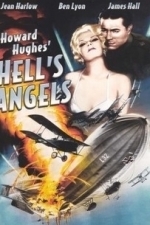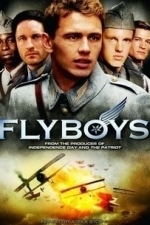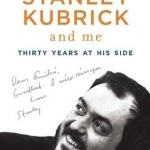
Stanley Kubrick and Me: Thirty Years at His Side
Emilio D'Alessandro, Filippo Ulivieri and Simon Marsh
Book
This intimate portrait by his former personal assistant and confidante reveals the man behind the...

Connectome: How the Brain's Wiring Makes Us Who We are
Book
Connectome, by Sebastian Seung is 'One of the most eagerly awaited scientific books of the year...
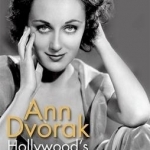
Ann Dvorak: Hollywood's Forgotten Rebel
Book
Possessing a unique beauty and refined acting skills, Ann Dvorak (1911-1979) found success in...
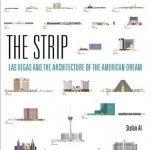
The Strip: Las Vegas and the Architecture of the American Dream
Book
The Las Vegas Strip has impersonated the Wild West, with saloon doors and wagon wheels; it has...
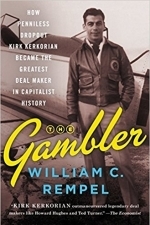
The Gambler: How Penniless Dropout Kirk Kerkorian Became the Greatest Deal Maker in Capitalist History
Book
The rags-to-riches story of one of America’s wealthiest and least-known financial giants,...
biography business
RəX Regent (349 KP) rated Hell's Angels (1930) in Movies
Feb 19, 2019
Where to begin?
Well, we follow the Routledge two brothers as they join the war effort and the Royal Air Corps. in 1914 and whilst one is a somewhat cowardly womaniser, his brother is the noble heroic type who spends the film being screwed over bey everyone in one way or another, but most notably by his girlfriend, Jean Harlow, who is so annoyingly wrong for him that it is a relief when he has heart is broken by her in the third act.
But like mots aspects of this plot, this is as messy and disjointed as everything else. We are given a story line to follow for two hours, as Hughes indulges his legendary love of flying to create some of the best dog fight sequences ever committed to film. They are real, epic and effective in conveying the thrilling danger of these world war one battles.
But this is a film of gimmick. Pushing the pre-code envelope with sex and bad language, this was originally conceived as a silent movie and was re-written and re-shot to become the sound movie whcih we have to today and there in clearly lies the problem. What we end up is a movie cobbled together, with silence sequences being converted to sound, the poor acting from its star James Hall as the idealistic Roy Routledge, Jean Harlow, replacing the original silent star Gretta Nissen for this sound version, excelling in her role as his trampy girlfriend and Ben Lyon as the weaker brother, Monte, but the real star of this show are the special effects.
But of the human stars, Harlow, presented here in the only colour footage known to exist of the tragic star, who would die at the young age of 26 just seven years later, probably delivers one of the best performances in the whole picture, certainly outshining her male co-stars.
Of the special effects though, the use of 2-tone Technicolor, which was actually shot with the Metrocolor system but processed by Technicolor, in one sequence as the group are all together at a party, as well as the classical use of tints during some other scenes, add a vibrancy to the project. But this also can have a jarring effect, especially as we leave the colour scenes and wrap up thet sequences in black and white.
But the model effects, notably the munition raid at the end and the Zeppelin bombing London scenes are spectacular, especially for the time. The other notable gimmick which has yet to be transferred to the small screen, was the original use of what was called Magnascope back in 1930.
This was obviously only used at high end theaters but this paved the way for what IMAX are doing now, by blowing up the aerial scenes into a larger screen format from the 1.20:1 ratio which the the rest of film was presented. But when you add all this up you have got a mess!
Magnascope, technicolor scenes, tinted scenes, daring aerial battles, a half arsed love story and an image of world war which was a kin to that of Michael Bay’s Pearl Harbor’s (2001) view of World War 2! But this is what this is. An early, lavish popcorn blockbuster, with little to offer but cinematic thrills, which it succeeds at without any doubt.
The action is great, the plot is mediocre to say the least but as film, it does offer a brief insight into how cinema audiences saw the Great War back in 1930 and you can not help but think that this audience was only nine years away from the next one as we watch this.
pictureBut the ending was grim, with noble ends rounding off a story of brotherly love and love of duty and country, seems overblown considering what we had had to sit through but still, by the end, is anybody really routing for the Routledge brothers to have a happy ending?
I certainly was not. But this ending is the nearest thing that this film has to a story arc, as is pays off the opening act where Roy risks his life fighting a duel for his cowardly brother against the very German officer who is about to have them executed.
Duty wins out and Monte sees the light at the end after a very melodramatic death scene.
But having said all that, this film is worth it for the action alone and for film buffs, the only colour footage of Jean Harlow.
Gareth von Kallenbach (980 KP) rated Flyboys (2006) in Movies
Aug 14, 2019
At the time, the conflict that was known as “The Great War and by optimists as “The War to End all Wars” was laying waste to a generation of young men and leaving many of Europe’s nations in ruins.
With new inventions such as submarines, machine guns, and poison gas being deployed in the battlefield, hundreds of thousands were killed in the early stages of the war. One of the new inventions to see use during the war were airplanes, which had only recently been invented, but showed great potential and were quickly used by both sides for scouting and combat missions.
Looking for adventure and hoping to make a name for themselves, a handful of American men volunteered to fight in the war and some joined the Lafayette Escadrille, so they could join the fight by flying for the French.
In the new film Flyboys, James Franco stars as Blaine Rawlings, a young man fleeing his family ranch in TX after an altercation with a financier who has foreclosed on his family home. Upon arriving in France, Blaine meets other Americans including Eugene (Abdul Salis), who has left a promising career as a boxer to give something back to his adoptive nation of France since due to a more tolerant society, the color of his skin has not held him back as much as it has in
America.
Under the command of Captain Thenault (Jean Reno) the squadron is trained and eventually sent into combat against the German forces where they learn the true nature and horrors of war firsthand as they have to deal with the very high mortality rate that faces pilots and the knowledge that each time they fly into battle, may very well be their last moments.
Blaine eventually meets a local French lady named Lucienne (Jennifer Decker), a shy French lady who cares for three young children after their parents were killed when their home was hit. The fact that the dead father was also her brother is added burden for Lucienne as she worries about losing those she cares for as the war wages on.
Despite her concerns, Lucienne becomes close to Blaine even though the war is a constant threat and keeps creating distances between them, especially when the German forces advance upon the village in which she lives.
Since this is a film about aviators, there are several scenes in the film of the various missions Blaine and his comrades undertook that are rendered with a mix of CGI and vintage aircraft from the era.
In the air, the action is engrossing and entertaining, but on the ground, much of the film drags as it has every cliché and war movie staple in the book thrown in as well as characters that are not well defined, and lack anything to make the audience really connect with them.
This is a real shame as there are some good points to the film, but at just over two hours running length, there is not enough chemistry or development with the characters to truly make the audience care about them or their fates.
The aerial scenes are well done, but in many ways remind me of Howard Hughes classic “Hell’s Angels” and vintage classics “Dawn Patrol” and“The Blue Max”
As it stands, the best thing going for the film are the flight sequences but the slow pacing, numerous clichés and bland characters keeps Flyboys grounded.
